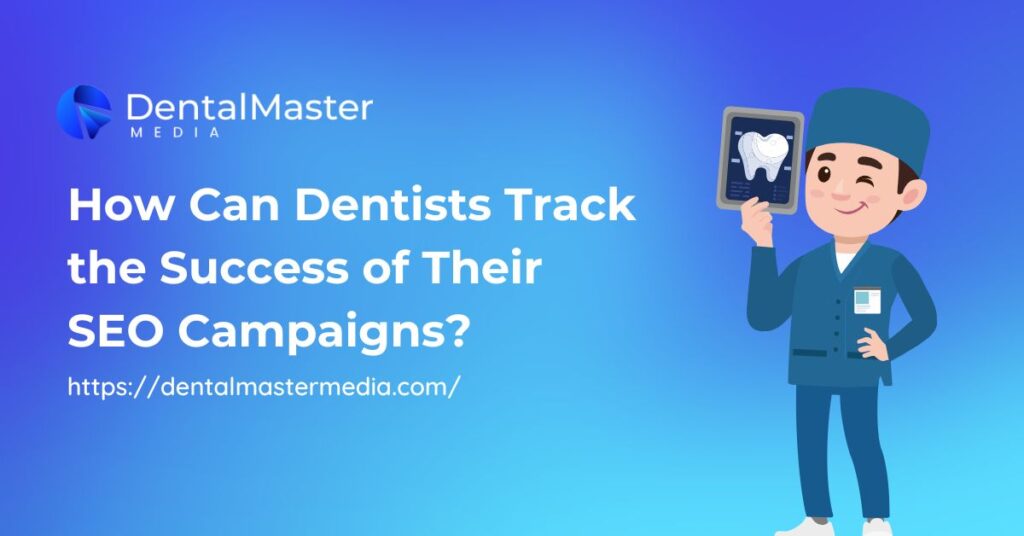For today’s dental clinics, having a website is no longer enough. If potential patients can’t find you on Google, you’re likely missing out on a lot of business. That’s where SEO—or Search Engine Optimization—comes in.
But simply launching an SEO campaign doesn’t guarantee results. You have to track it. Just like a patient’s oral health, progress must be monitored.
Tracking your SEO lets you see what’s working, what’s not, and where you need to adjust. This insight can help your practice grow faster and smarter.
What Is SEO Tracking and Why Is It Important?
Understanding the Basics of SEO
SEO helps your website appear higher on Google when people search for things like “emergency dentist near me.” A well-optimised site brings more visitors—and more potential patients.
SEO For Dentist focuses on making dental websites easier to find by improving content, keywords, site structure, and user experience.
Many Dental Practice SEO Specialists follow clear plans that include audits, keyword research, local SEO updates, and monthly tracking.
These plans help dental clinics grow their online presence and attract more patients.
Why Tracking Results Matters
It’s easy to assume that launching an SEO campaign means you’ll see results soon. But SEO is a long-term game, and tracking is the only way to know if your strategy is heading in the right direction.
By checking data regularly, you can figure out which pages attract the most visitors, which keywords bring traffic, and whether those visits turn into real appointments.
Tracking helps you make informed decisions instead of guessing.
Key SEO Metrics Every Dentist Should Watch
1. Website Traffic and Where It Comes From
Website traffic is the total number of people visiting your website, but it’s not just about volume.
The source of your traffic matters too. For example, organic traffic comes from people who found your website through search engines, which is a strong sign your SEO is working.
Direct traffic means someone typed your URL directly, while referral traffic means they came from another site that linked to you. Paid traffic comes from ads.
Understanding these traffic sources helps you measure the value of your SEO. If organic traffic is increasing over time, your SEO campaign is making progress.
2. Keyword Rankings for Dental Terms
One of the easiest ways to measure SEO success is by checking your rankings for relevant search terms.
For instance, if you want to be found for “dental implants Methuen,” you need to know where your site ranks for that phrase.
Ranking in the top three results on Google often brings in the most traffic.
You don’t have to track every keyword. Focus on a few high-value ones related to your services and location.
When you see those keywords moving up, it shows your content and optimisation efforts are paying off.
3. Google Business Profile Insights
Your Google Business Profile is a vital tool for attracting local patients. It shows up in map searches and includes your clinic’s address, phone number, reviews, and photos.
Google provides insights showing how many people viewed your listing, requested directions, clicked your phone number, or visited your website.
This data is valuable because it shows how your SEO helps patients discover your clinic through local search. If the numbers go up, your visibility is improving.
4. Bounce Rate and Time on Page
Bounce rate shows how many people leave your website after viewing just one page. If the bounce rate is high, visitors may not be finding the information they need, or the page may be loading slowly.
On the other hand, time on page tells you how long people are staying and reading.
If someone spends several minutes on a treatment page or blog post, it means the content is useful or interesting.
Both of these metrics give you clues about how people are interacting with your website and whether it encourages them to take the next step.
5. Conversion Tracking: Calls, Forms, and Appointments
Ultimately, the most important question is: are visitors turning into patients? Conversion tracking shows how many people filled out a contact form, clicked a “Book Now” button, or called your practice. These are the actions that matter most in any SEO campaign.
You can track these actions using Google Analytics or tools that record call data. If conversions are going up along with traffic, your SEO is doing its job.
Tools Dentists Can Use to Track SEO Campaigns
Google Analytics: The Go-To Free Tool
Google Analytics is one of the most helpful tools for SEO tracking. It shows how many people visit your site, what pages they view, how long they stay, and what actions they take. It’s free and simple to use.
If you’re promoting services like teeth whitening or clear aligners, it helps you see which pages get the most attention.
Most SEO plans for dentists include regular checks of this data to improve strategy—like boosting strong pages or fixing weak ones—based on how real visitors behave.

Google Search Console: Keyword and Technical Tracking
Google Search Console is another free tool from Google. It shows you which keywords people are using to find your site and where you rank for those keywords.
It also tells you about any technical issues that could hurt your rankings, such as broken links or mobile usability problems.
If a specific service page is underperforming, Search Console can help you find out why. It may show that the page isn’t indexed correctly or that it’s missing important keywords.
Rank Tracking Tools for Dental Keywords
If you want more detailed insights, there are several paid tools that can track your rankings across multiple keywords and locations.
Tools like SEMrush, Ahrefs, or Ubersuggest show you how your site compares to competitors and where you’re gaining or losing ground.
These tools also help you monitor how updates to your site affect your visibility over time.
For example, if you add a new page for root canal treatment, you can use these tools to track how quickly it starts appearing in search results.
Setting Goals and Benchmarks for Your Dental SEO
Start With a Baseline
Before you start measuring progress, you need to understand where you currently stand. Look at your current traffic numbers, keyword rankings, bounce rate, and conversion rate.
This is your baseline. Tracking starts with knowing where you are so you can measure how far you’ve come.
Set Realistic Monthly or Quarterly Goals
You don’t have to hit massive numbers overnight. Start with goals like increasing traffic by 15% in three months or getting three new keywords into the top 10 results.
Make sure your goals are specific and based on data. This keeps you focused and motivated while making steady progress.
How to Understand SEO Reports From Your Marketing Team
What a Good SEO Report Should Include
If you’re working with a marketing team, ask for clear and regular SEO reports. A useful report should include traffic numbers, keyword ranking changes, conversion data, and an overview of how your Google Business Profile is performing.
It should also provide some explanation in simple terms so you don’t have to guess what the numbers mean.
A good report connects actions to outcomes. For example, if your team added more content to your Invisalign page, the report should show how that affected traffic and rankings.
Asking the Right Questions
Don’t be afraid to ask questions about the data. Ask things like:
- Are we getting more phone calls from our website?
- Which services are bringing in the most online interest?
- What’s helping us rank higher this month?
These questions help you get to the heart of what matters—whether your SEO is helping real people find your practice.
Real-Life Example: How One Dentist Grew With SEO
Dr. Leena had a small dental clinic in a busy area but wasn’t seeing many new patients. She started focusing on SEO with help from a local marketing team.
After building out service pages, updating her Google Business Profile, and adding blog content, her website began to see real change.
Over six months, her organic traffic doubled. Her clinic began ranking in the top three for “dental fillings near me” and “kids dentist in [city name].”
More importantly, her appointment calendar filled up faster, especially from calls coming through her site. That’s the kind of success you can measure with proper SEO tracking.
Common Mistakes Dentists Make in SEO Tracking
Only Looking at Rankings
Ranking high for a keyword looks impressive, but it’s not everything. A keyword might bring in traffic but lead to no conversions.
That’s why you must look at rankings alongside other metrics like bounce rate and calls.
Ignoring Phone Call and Appointment Data
Some dentists for SEO focus too much on traffic and forget to check whether people are actually reaching out.
Conversion tracking tools help you understand how many visitors are turning into real patients. Without this, your numbers might look good but mean little for business.
Conclusion
Tracking SEO isn’t a one-time task. It’s something that should be done regularly, just like checking your monthly patient numbers or reviewing treatment plans.
The better you understand what’s working online, the easier it becomes to bring in new patients and grow your practice.
If you’re looking for support to manage your SEO tracking or boost your online presence, Dental Master Media can help make the process simple and effective.

Suraj Rana is the owner of Dental Master Media and a leading expert in SEO for dental practices. With a passion for dental marketing, he has successfully helped numerous dental clinics climb the search engine ranks. Suraj’s expertise makes him a go-to resource for effective, results-driven dental marketing.

